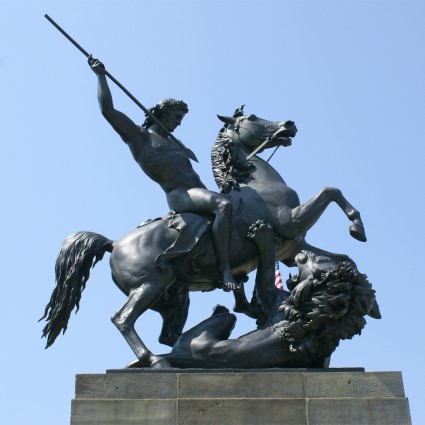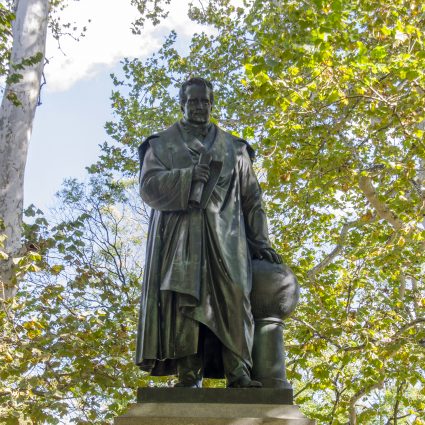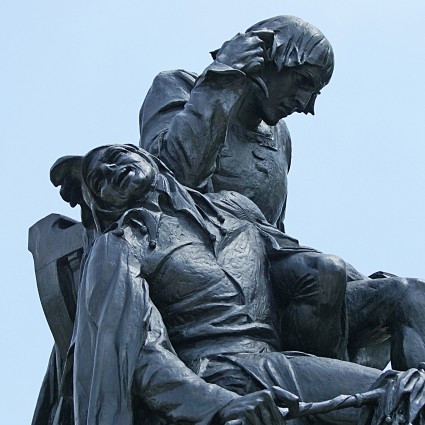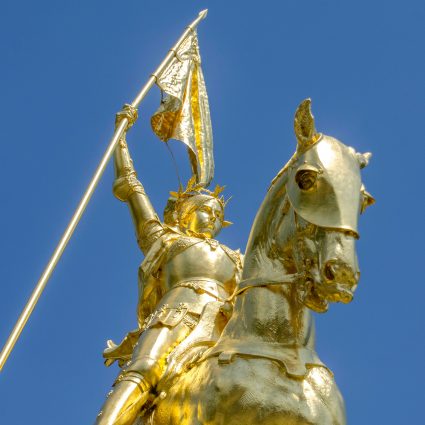At A Glance
Saint George was a real-life Roman soldier executed for refusing to renounce his Christian faith
According to legend, this patron saint of England rescued a princess by slaying a dragon
Commissioned in 1872 by the Society of the Sons of St. George, an organization established to assist the English community in Philadelphia
The sculpture once stood atop St. George’s Hall, the Society’s headquarters at Arch and 13th Streets
A real-life Roman soldier executed for refusing to renounce his Christian faith, Saint George has often appeared in religious contexts to represent the Christian hero’s victory over evil. In corresponding legend, this patron saint of England is lauded for rescuing a princess by slaying a dragon. The dragon in this sculpture’s depiction has been pierced in the chest by a lance, and rakes a frightened horse’s belly with its claws as it snarls in defiance toward its dominating, saintly foe.
Although records indicate the bronze cast was made in Birmingham, England, the artist’s identity remains a mystery
St. George and the Dragon was commissioned in 1872 by the Society of the Sons of St. George, an organization established to assist Englishmen in distress in Philadelphia. (The Society was also involved in early calls leading to Alexander Stirling Calder’s Shakespeare Memorial.) The forceful bronze sculpture once stood atop St. George’s Hall, the Society’s headquarters at Arch and 13th Streets, and was then relocated in 1901 to the Society’s new home at Arch at 19th Streets.
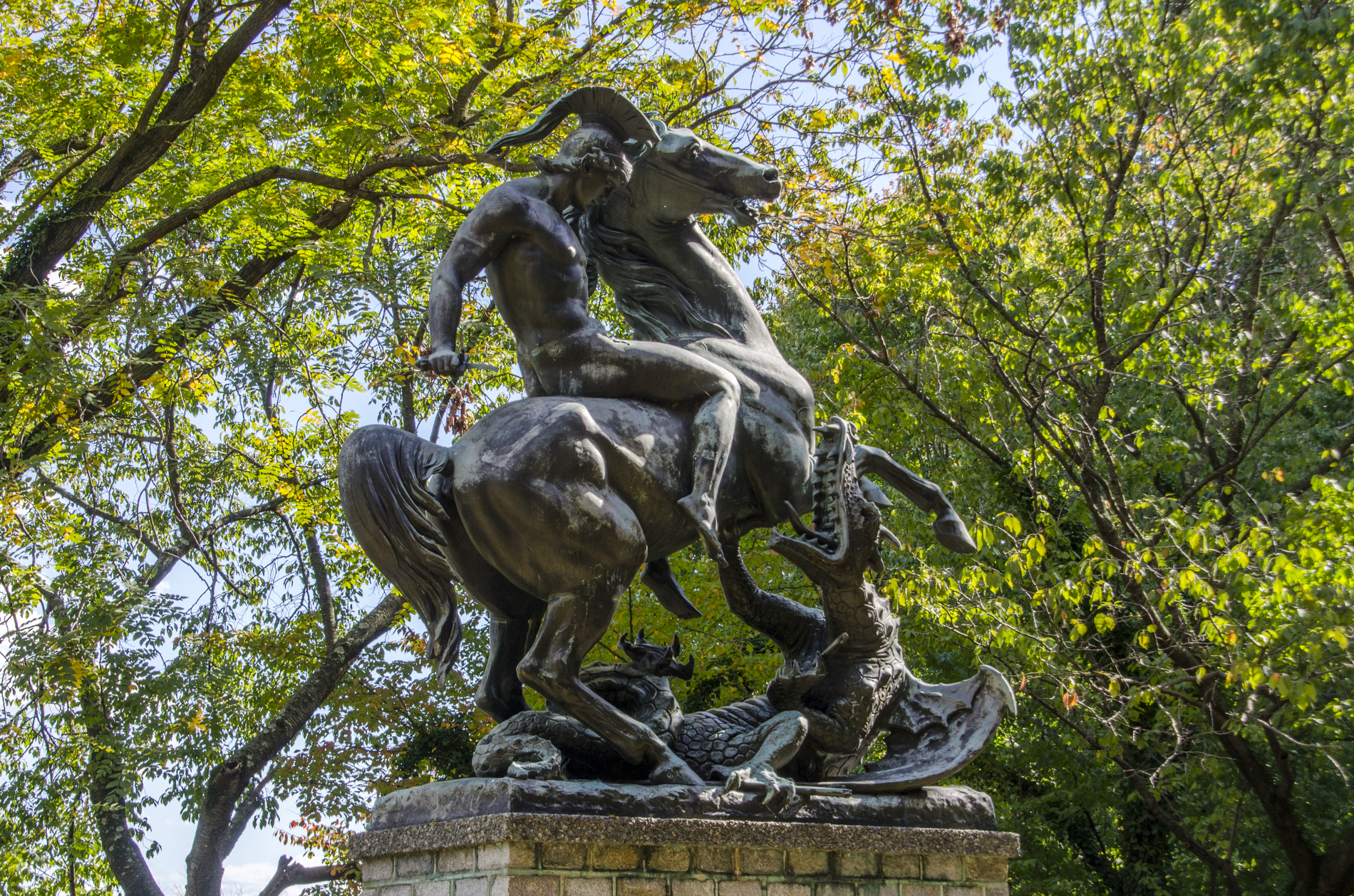
The sculpture was eventually donated to the City of Philadelphia and placed into storage at the Philadelphia Museum of Art in 1935. Forty years later, the sculpture was removed from storage and reinstalled in time for the U.S. Bicentennial. It was placed at its present site in West Fairmount Park, where it sits across from a memorial to Alexander von Humboldt along the Schuylkill River.
Although records indicate the bronze cast was made in Birmingham, England, the artist’s identity remains a mystery.
